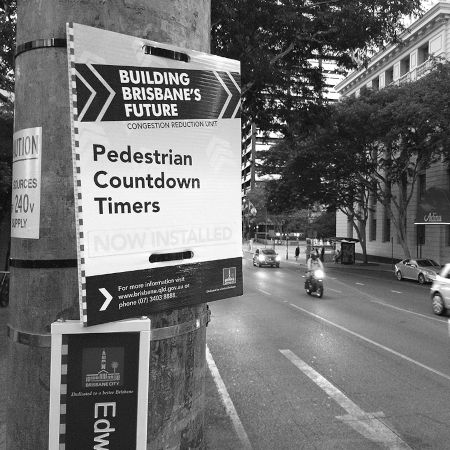Deploy /
Creating Interest
Beyond the launch of your media architecture intervention
Often, all the time and effort are spent on designing and building the media architecture intervention. But what happens after it is launched in the public sphere is in many ways even more important than the path towards that moment. This is the time when the public first sees the intervention, potentially on a large scale, which might be in terms of the intervention’s size (e.g. if it is a media facade) or distribution (e.g. if it is a network of public screens).
Some of the authors of this book have experienced this firsthand with light installations exhibited as part of the Vivid Sydney festival. It is exhausting to get to the launch moment, but the real work, in terms of monitoring audience interaction, adjusting the content and maintaining its operation, lies on the other side of the launch. This experience is common to media facades and large urban screens. The developer makes sure the technology is installed according to the architect’s specifications. But when the key is handed over, the platform only runs temporary placeholder content, and there is no plan in place for how it will maintain a connection to the local community. In the literature, this is referred to as the administration gap.1
Creating and maintaining interest involves a temporal staging sequence to manage expectations and to emphasise the value of iteration beyond the deployment of applications.2 Depending on the context, this can be done through rolling out the media architecture intervention in stages, for example, testing it at a few locations before deploying it across an entire city or multiple cities. Whether the intervention spans multiple locations or not, clear signage provides a low-cost and effective way to communicate with the local public. This can include background information about the project: what the project aims to achieve; how long it will be in place for; whom to contact in case something isn’t working or is broken; and, importantly, how people can get involved, which in its simplest form might just be through providing feedback.
For example, the City of Brisbane, Australia, used signage to inform people about the staged deployment of new countdown timers at traffic lights. The signs pointed passers-by to a website and a phone number where they could get more information. Ideally, such signage could include a call for participation or feedback with a QR code for people to directly connect via their smartphone.
Doing this part of a project launch well contributes to the public acceptance of an intervention. In some cases, it may even lead to follow-up projects and deployments. For example, the city of Vienna, Austria, installed new pedestrian traffic light signals showing couples instead of the usual stick figures. The intervention was originally rolled out as a temporary installation at a few selected pedestrian crossings. However, it was strategically aligned to coincide with events happening in the city at the time, promoting tolerance and mutual respect. The initiative was featured so widely in global media that the city decided to continue the two-month deployment indefinitely and has since rolled out traffic light couples (ampelpärchen) at additional intersections.
Method Steps
-
Consider the key aspects for the launch of your media architecture intervention into the public sphere. Note down who is involved, how, when and where it will launch, and how long it will be displayed.
-
Identify activities that could happen before the launch. For example, this may include a story in the local newspaper, radio interviews, engaging citizens to contribute content that may be displayed through the intervention, etc.
-
Identify activities that could happen during the launch. For example, this may include a staged performance, a community event, etc. Consider whether there are other events happening already in the area that the intervention could be linked to.
-
Identify activities that could happen after the launch. For example, this may include promoting the intervention through a shareable online video, creating feedback channels, etc.
-
Use the observations recorded in steps 1–4 to formulate a launch plan, which maps out the phases before, during and after the launch.
-
Review your launch plan and look for additional initiatives that the project team should focus on, e.g. creating signage with QR codes for passers-by to learn more and submit feedback. Also consider whether and how this could incorporate impact assessment aspects.
